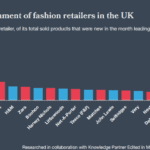Explaining products in detail is crucial for successful online trading
RETAILERS THAT STAND out in the Merchandising Performance Dimension go the extra mile to explain their products and show how they are relevant to potential buyers. Images, product descriptions, reviews, ratings, website navigation, social sharing, cross-selling and upselling are all key tools, as is ensuring that customers who have chosen their products can then buy them easily through short checkout procedures, with no requirement to register.
What the Top500 do
Most IREU Top500 retailers make their websites easy to search and navigate. Dropdown search suggestions are offered by 70%, with 72% enabling customers to filter their search by price and 72% by product type. Filtering search by brand is enabled by 51% of retailers while a third (33%) ensure that the website displays results even when shoppers search for an item that’s not stocked.
Product information is communicated through more than descriptions and reviews as ratings and images also play their part. Across Europe, retailers showed between three and four product images, with about 50% showing product ratings and 52% product reviews. Most (77%) use banner advertising, while 10% use a ‘bestseller’ ribbon to flag up popular products. The use of offers is widespread: 81% of Top500 retailers display obvious promotions on their product pages.
Social media plays an important part in the selling process for many traders. More than half (53%) enable shoppers to share products with friends, while 37% enable social validation and 23% enable shoppers to Like their products on Facebook.
More than two-thirds (69%) recommend similar products to shoppers, while 22% recommend an upgrade through up-selling, with 53% enabling shoppers to save products to a wishlist.
Just under half (49%) of Top500 retailers require customers to register before checking out, while they also need to complete between three and four pages at checkout.
What the leaders do
Social shoppers are catered for at UK DIY retailer Homebase , which enables shoppers to Like products on Facebook and to validate products on social networks. It shares product ratings and encourages browsers to trade up through the use of upselling. UK grocer Ocado also uses upselling.
Visitors to its site can filter their searches by brand as well as see product ratings and use social validation.
UK fashion retailer Very makes it easy for shoppers to find their way around its website. Shoppers can filter their searches by brand or use the real-time suggestions that drop down as they type in the search box. The retailer makes alternative product suggestions. Shoppers can also Like products.
Littlewoods [IRDX RLIW] is one of the 10% of Top500 retailers that has a ‘bestseller’ ribbon. Its products are Like-able and its website shows product ratings.
Smyths shows product images, ratings and reviews and enables search by brand. It does, however, require customers to register before they checkout.
Beyond the UK market, Polish entertainment and electronics retailer Empik.com uses the ‘bestseller’ ribbon as well as product ratings and reviews. German healthcare and household goods business DM enables search by brand, social validation and Likes.
How markets vary
German shoppers are likely to find it easier than most to get around a website: 75% of retailers trading in that market offer dropdown search suggestions (contrasting with 35% in Bulgaria), while 73% enable search by price (49% in Bulgaria) and 83% by product type (50% in Norway). Retailers in Germany also offer more product images than the European average, at between four and five.
British retailers enable shoppers to see what previous purchasers thought, with 50% sharing product ratings and 52% showing product reviews. By contrast, 22% of retailers selling to the Bulgarian market show product ratings, with the same proportion also showing reviews.
Banner advertising is most commonly used in Spain (85%), where the smallest percentage of retailers (43%) require visitors to register before checking out.
Those selling in Ireland enable shoppers to check out in an average of between three and four pages, while those selling in Romania do the same job in between two and three pages.
InternetRetailing Knowledge Partner Brand View looked specifically at UK retailers. Its data suggests that 38% of products were on promotion at the time of analysis, with retailers offering a median of 2,545 promotions. An average of 3% of products on offer were missing descriptions, while 57% had reviews.







